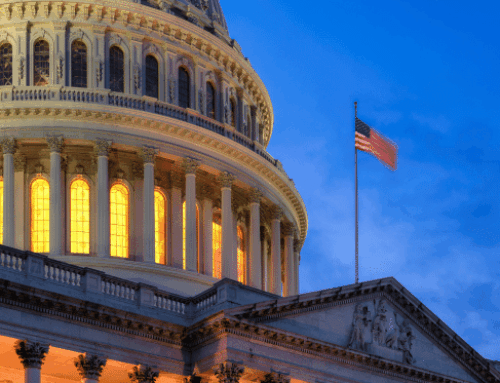The claim: Clinton and Obama were the only presidents to lower the deficit in the last 50 years
A few posts from 2018 about presidential administrations and the federal deficit have resurfaced on Facebook in recent weeks.
The posts feature photos of Democratic Presidents Bill Clinton and Barack Obama, and pose the question, “Why do Republicans claim to be fiscally conservative when these are the only two presidents to lower the deficit in the last 50 years?”
Erlene King — a user who shared a version of the post — told USA TODAY she believes it is “100% true.”
“A Democrat is mostly elected after a Republican screw things up. Then Republican Senators become fiscally responsible, forcing the Democrat to just fix the problem and never vote for social programs,” she wrote. “Thus the lower deficit.”
What is the federal deficit?
Like any entity, the federal government generates revenue and racks up expenses on an annual basis.
Its revenue comes from sources like federal income taxes. Its expenses are determined by the federal budget, and include federal benefits and funding for federal agencies, per USA.gov.
If total revenue exceeds total expenses, the difference is called a “surplus.” If total expenses exceed total revenues, the difference is called a “deficit.” The figure is specific to each fiscal year.
The federal government typically operates at a deficit rather than a surplus. The accumulated federal budget deficits, plus other off-budget expenses, comprise the federal debt, per the Treasury Department.
Who lowered the federal deficit?
The claim in the viral post centers on presidents who left office with less of a deficit than when they entered the White House.
The Office of Management and Budget has tracked the federal government’s revenues, expenses and surpluses/deficits from 1789 to 2025 (fiscal years beyond the current one are estimates). Let’s look at the last five decades.
President Richard Nixon entered the White House in 1969. At the time, there was a $3.2 billionsurplus. By the time he resigned in 1974, there was a $6.1 billiondeficit.
That was the baseline for President Gerald Ford, who took over in 1974. By the time he left the White House in 1977, the deficit had grown to $53.7 billion.
That was the starting point for President Jimmy Carter when he entered the White House in 1977. By the time he left in 1981, it had grown to $78.9 billion.
That was the baseline for President Ronald Reagan when he entered the White House in 1981. By the time he exited in 1989, the deficit had doubled to $152.6 billion.
That was the starting point for President George H.W. Bush, who entered the White House in 1989. By the time he left in 1993, the deficit had grown over $100 billion to $255 billion.
That was the baseline for President Bill Clinton, who entered the White House in 1993. By the time he exited, there was a $128.2 billion surplus.
That was the starting point for President George W. Bush, who took over the White House in 2001. By the time he left in 2009, there was a $1.41 trillion deficit.
That was the baseline for President Barack Obama, who entered the White House in 2009. By the time he exited in 2017, there was a $665.4 billion deficit — about half of what it was when he entered.
That was the starting point for President Donald Trump, who came to the White House in 2017. By the time Trump leaves in 2021, there will be a $966 billion deficit, according to estimates from the Office of Management and Budget.
According to those figures, it’s true that just Clinton and Obama — the only Democrats besides Carter in the last 50 years — left the Oval Office in a year with a lower deficit than the year when they arrived.
Some other presidents lowered the deficit midway through their terms, but they all exited the White House in a year with a higher deficit than the year they entered.
What’s behind the deficits and surpluses?
Joann Weiner, an economics professor at George Washington University, told USA TODAY that “it is true, in fact, that Republicans create deficits and Democrats reduce deficits, by their personal choices.”
Tax cuts, for example — a hallmark of Republican presidencies — reduce the government’s revenue and make a deficit more likely.
“Presidents don’t control every lever in the economy,” she said. “However, a lot of those specific policies do either add or subtract from the budget deficit, and in general, Democrats are better at handling the deficit than Republicans are.”
Stephen Ellis, the president of Taxpayers for Common Sense, told USA TODAY that some responsibility for the deficit also falls to Congress.
“Any President bears some responsibility for the deficit, but so does Congress, they are passing the spending bills that the President signs,” he wrote.
Ellis noted that divided government — in which the White House and Congress are controlled by different parties — also tends to “restrain some of the spending.”
What about the federal debt?
It’s worth noting that how each president grew or shrunk the budget deficit over their terms in office is distinct from how much they added to total federal debt.
“Reducing the deficit every year doesn’t mean that debt is going to go away,” Weiner explained.
The Treasury Department has been tracking accumulated debt since 1993, and it has grown under each presidential administration, per Business Insider.
Under Clinton, federal debt grew $1.49 trillion.
“The debt is the nation’s accumulated annual deficits over all the years,” Ellis wrote. “Even though Clinton had some surpluses, the accumulated deficits were more in excess of that.”
Under Bush, the federal debt increased $4.30 trillion. Under Obama, it grew another $8.95 trillion.
It’s too soon to say the final figure for Trump. But so far, under his administration, federal debt has increased about $7 trillion, per USA TODAY.
Our rating: Missing context
It’s true that Clinton and Obama were the only presidents in the last five decades to exit the White House in a year with a lower deficit than the year when they entered. But some other presidents lowered the deficit midway through their terms. Presidents are also not solely responsible for changes in the deficit; for example, Congress plays a role. It’s also worth noting that the deficit is distinct from the federal debt — which increased under both Clinton and Obama. As a result, we rate these posts MISSING CONTEXT, because without additional information they could be misleading.
Our fact-check sources:
- USA.gov, Oct. 10, 2019, Budget of the U.S. Government
- Treasury Direct, May 5, Frequently Asked Questions about the Public Debt
- Office of Management and Budget, accessed Dec. 31, Historical Table 1.1
- Joann Weiner, Professor at George Washington University
- Stephen Ellis, President of Taxpayers for Common Sense
- Business Insider, Feb. 20, 2019, The US national debt just pushed past $22 trillion — here’s how Trump’s $2 trillion in debt compares with Obama, Bush, and Clinton
- USA TODAY, Nov. 5, Fact check: Since 2017, national debt has risen but by less than claimed








